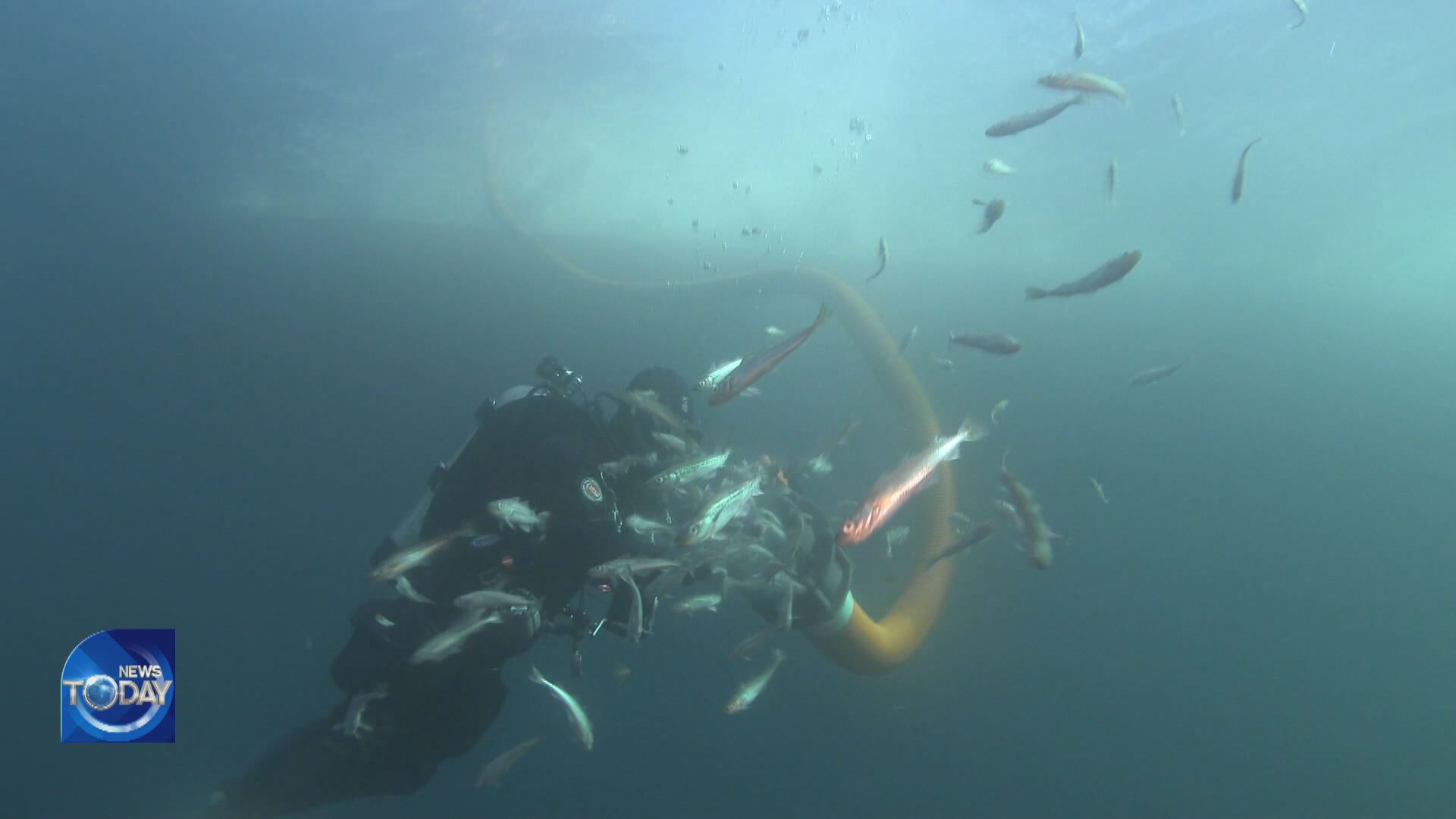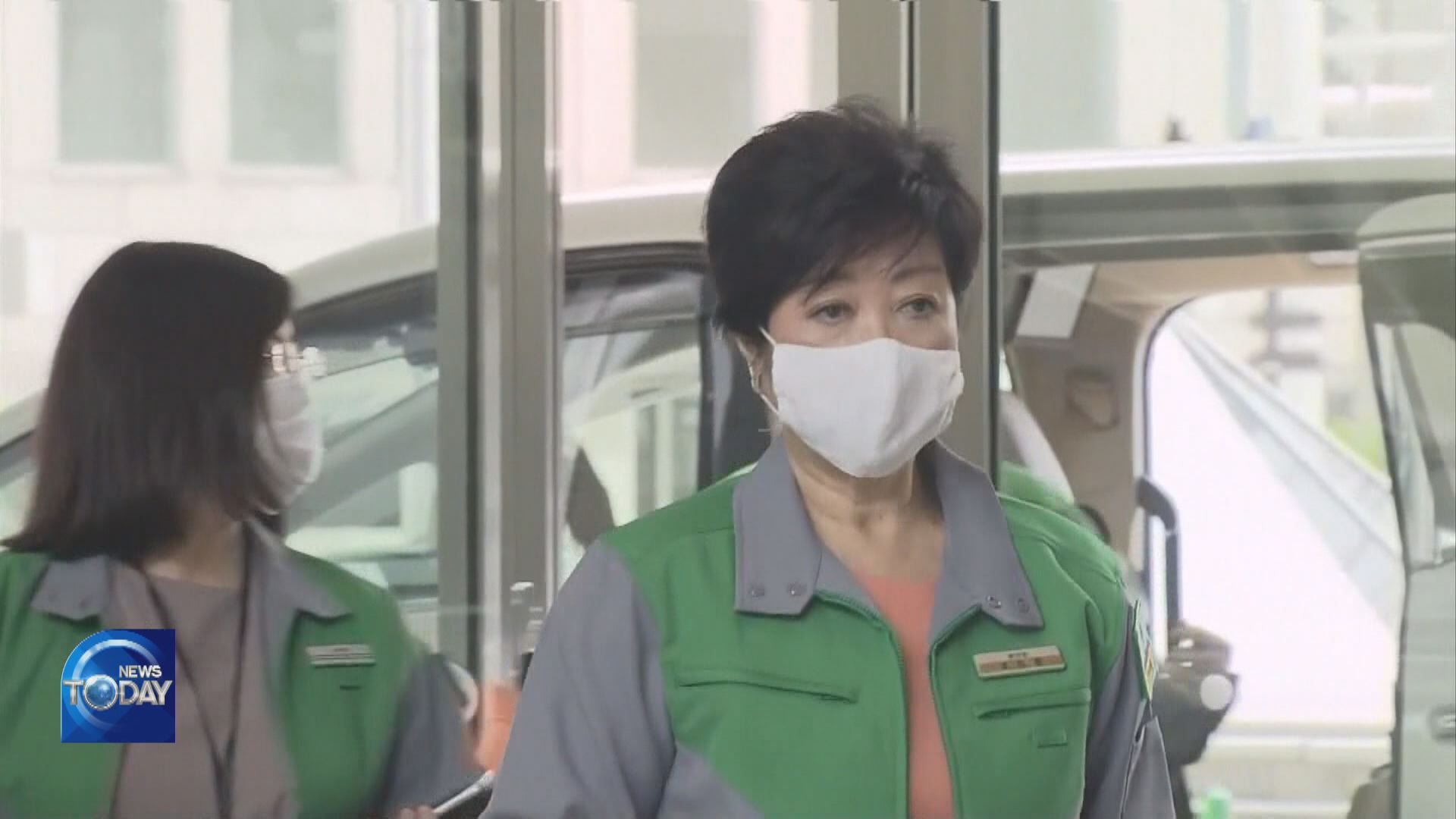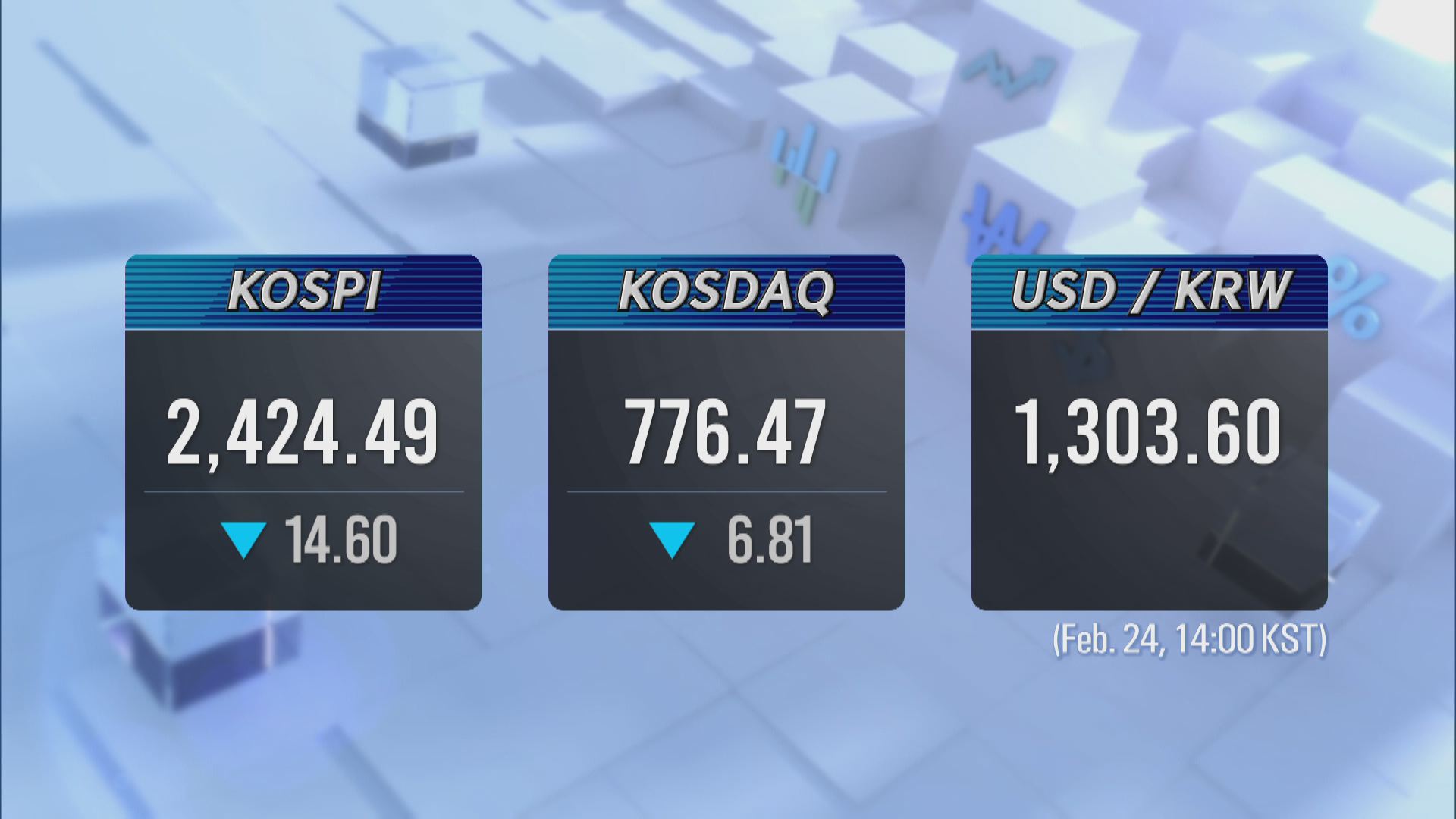POLLACK REVIVAL PROJECT ENDS IN FAILURE
입력 2023.02.24 (15:09)
수정 2023.02.24 (16:45)
읽어주기 기능은 크롬기반의
브라우저에서만 사용하실 수 있습니다.
[Anchor Lead]
Back in 2014, the government launched a project to revive domestically bred pollacks that disappeared from Korean waters, and released over 1.8 million young pollacks that were incubated through artificial insemination over 8 years. But authorities are being criticized for pushing ahead with the high-cost business, as fishermen are still finding it very difficult to catch pollacks in the sea.
[Pkg]
Some 15-thousand young pollacks are released into the ocean on the northernmost tip of the east coast. They were incubated through artificial insemination using live mother-pollacks that had been purchased for 500-thousand won each. Over the course of eight years, over 1.8 million pollacks have been released. But fishermen continue to have a hard time catching pollack.
[Soundbite] Choi Du-chang(Fisherman) : "There is no pollack now, not one. It used to be very common in the past."
The Ministry of Oceans and Fisheries launched a project to revive the species in 2014 with the goal of providing domestically bred pollack to consumers by 2020. Ten billion won was invested in production facilities and R&D. But only 17 of the released pollack have been caught in Korean waters. Authorities drew criticism for pushing ahead with the project without taking into account the fact that pollack can no longer live in the Korean waters because of the rising water temperature.
[Soundbite] Prof. Jung Suk-geun(Jeju Nat’l Univ.) : "Despite criticism over money squandering and wrong implementation, the ministry continues to push for it."
But the oceans and fisheries ministry says the project will soon produce results. It plans to raise pollack's survival rates by releasing fish measuring more than 10cm long.
[Soundbite] Lim Tae-ho(Ministry of Oceans and Fisheries) : "The released pollacks, albeit in small amount, are being caught four to five years later. Efforts to conserve the species and restore resources should continue."
However, experts are calling for a basic survey into the changing marine environment and conditions in which pollack can live.
Back in 2014, the government launched a project to revive domestically bred pollacks that disappeared from Korean waters, and released over 1.8 million young pollacks that were incubated through artificial insemination over 8 years. But authorities are being criticized for pushing ahead with the high-cost business, as fishermen are still finding it very difficult to catch pollacks in the sea.
[Pkg]
Some 15-thousand young pollacks are released into the ocean on the northernmost tip of the east coast. They were incubated through artificial insemination using live mother-pollacks that had been purchased for 500-thousand won each. Over the course of eight years, over 1.8 million pollacks have been released. But fishermen continue to have a hard time catching pollack.
[Soundbite] Choi Du-chang(Fisherman) : "There is no pollack now, not one. It used to be very common in the past."
The Ministry of Oceans and Fisheries launched a project to revive the species in 2014 with the goal of providing domestically bred pollack to consumers by 2020. Ten billion won was invested in production facilities and R&D. But only 17 of the released pollack have been caught in Korean waters. Authorities drew criticism for pushing ahead with the project without taking into account the fact that pollack can no longer live in the Korean waters because of the rising water temperature.
[Soundbite] Prof. Jung Suk-geun(Jeju Nat’l Univ.) : "Despite criticism over money squandering and wrong implementation, the ministry continues to push for it."
But the oceans and fisheries ministry says the project will soon produce results. It plans to raise pollack's survival rates by releasing fish measuring more than 10cm long.
[Soundbite] Lim Tae-ho(Ministry of Oceans and Fisheries) : "The released pollacks, albeit in small amount, are being caught four to five years later. Efforts to conserve the species and restore resources should continue."
However, experts are calling for a basic survey into the changing marine environment and conditions in which pollack can live.
■ 제보하기
▷ 카카오톡 : 'KBS제보' 검색, 채널 추가
▷ 전화 : 02-781-1234, 4444
▷ 이메일 : kbs1234@kbs.co.kr
▷ 유튜브, 네이버, 카카오에서도 KBS뉴스를 구독해주세요!
- POLLACK REVIVAL PROJECT ENDS IN FAILURE
-
- 입력 2023-02-24 15:09:04
- 수정2023-02-24 16:45:31

[Anchor Lead]
Back in 2014, the government launched a project to revive domestically bred pollacks that disappeared from Korean waters, and released over 1.8 million young pollacks that were incubated through artificial insemination over 8 years. But authorities are being criticized for pushing ahead with the high-cost business, as fishermen are still finding it very difficult to catch pollacks in the sea.
[Pkg]
Some 15-thousand young pollacks are released into the ocean on the northernmost tip of the east coast. They were incubated through artificial insemination using live mother-pollacks that had been purchased for 500-thousand won each. Over the course of eight years, over 1.8 million pollacks have been released. But fishermen continue to have a hard time catching pollack.
[Soundbite] Choi Du-chang(Fisherman) : "There is no pollack now, not one. It used to be very common in the past."
The Ministry of Oceans and Fisheries launched a project to revive the species in 2014 with the goal of providing domestically bred pollack to consumers by 2020. Ten billion won was invested in production facilities and R&D. But only 17 of the released pollack have been caught in Korean waters. Authorities drew criticism for pushing ahead with the project without taking into account the fact that pollack can no longer live in the Korean waters because of the rising water temperature.
[Soundbite] Prof. Jung Suk-geun(Jeju Nat’l Univ.) : "Despite criticism over money squandering and wrong implementation, the ministry continues to push for it."
But the oceans and fisheries ministry says the project will soon produce results. It plans to raise pollack's survival rates by releasing fish measuring more than 10cm long.
[Soundbite] Lim Tae-ho(Ministry of Oceans and Fisheries) : "The released pollacks, albeit in small amount, are being caught four to five years later. Efforts to conserve the species and restore resources should continue."
However, experts are calling for a basic survey into the changing marine environment and conditions in which pollack can live.
Back in 2014, the government launched a project to revive domestically bred pollacks that disappeared from Korean waters, and released over 1.8 million young pollacks that were incubated through artificial insemination over 8 years. But authorities are being criticized for pushing ahead with the high-cost business, as fishermen are still finding it very difficult to catch pollacks in the sea.
[Pkg]
Some 15-thousand young pollacks are released into the ocean on the northernmost tip of the east coast. They were incubated through artificial insemination using live mother-pollacks that had been purchased for 500-thousand won each. Over the course of eight years, over 1.8 million pollacks have been released. But fishermen continue to have a hard time catching pollack.
[Soundbite] Choi Du-chang(Fisherman) : "There is no pollack now, not one. It used to be very common in the past."
The Ministry of Oceans and Fisheries launched a project to revive the species in 2014 with the goal of providing domestically bred pollack to consumers by 2020. Ten billion won was invested in production facilities and R&D. But only 17 of the released pollack have been caught in Korean waters. Authorities drew criticism for pushing ahead with the project without taking into account the fact that pollack can no longer live in the Korean waters because of the rising water temperature.
[Soundbite] Prof. Jung Suk-geun(Jeju Nat’l Univ.) : "Despite criticism over money squandering and wrong implementation, the ministry continues to push for it."
But the oceans and fisheries ministry says the project will soon produce results. It plans to raise pollack's survival rates by releasing fish measuring more than 10cm long.
[Soundbite] Lim Tae-ho(Ministry of Oceans and Fisheries) : "The released pollacks, albeit in small amount, are being caught four to five years later. Efforts to conserve the species and restore resources should continue."
However, experts are calling for a basic survey into the changing marine environment and conditions in which pollack can live.
이 기사가 좋으셨다면
-
좋아요
0
-
응원해요
0
-
후속 원해요
0















![[단독] 윤석열 정부, ‘대통령실 공사비 미지급’ 피소](/data/news/2025/06/30/20250630_8MRvHk.png)

이 기사에 대한 의견을 남겨주세요.